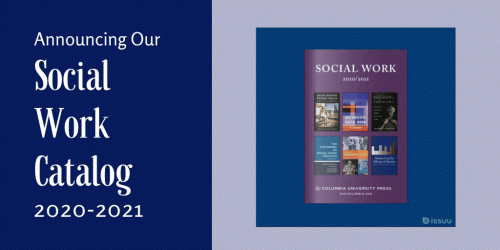Interview with Avidan Milevsky, author of Sibling Relationships in Childhood and Adolescence
The following is an interview with Avidan Milevsky, author of Sibling Relationships in Childhood and Adolescence: Predictors and Outcomes
Question: Why is it important to learn about sibling relationships?
Avidan Milevsky: There are several reasons why research on siblings is important. First, the most long-lasting and enduring relationship an individual can develop is with a sibling. Considering their closeness in age and the fact that sibling relationships begin early in life, siblings can bond for a lifetime.
Even more consequential, we now know that positive sibling relationships in children and adolescents are linked with enhanced cognitive abilities, emotional balance, and social adjustment. These advantages of a close sibling bond can also be seen throughout life. Furthermore, studies show that sibling support can also compensate for weak relationships with other members of our social network. If a child or an adolescent is experiencing detachment from friends or even from parents, relying on siblings can ameliorate some of those feelings of detachment.
The bottom line is that research now reveals it is profoundly advantageous to have a close sibling relationship for many reasons, and learning about what can enhance the sibling bond can be extremely valuable for individuals and families.
Q: Considering all the issues that parents need to deal with these days, is sibling relationship quality really a concern?
AM: True, parents have many concerns relating to raising their children. In addition to the usual behavioral issues that parents need to deal with at home, many negative influences from peer groups, neighborhoods, and the media unfortunately influence children in destructive ways.
However, in surveys that we have conducted at the Center for Parenting Research at Kutztown University of Pennsylvania, which I direct, parents consistently report sibling relationship issues as being one of the top three challenges they face as parents. Siblings, who do not get along, can create turmoil in the entire family system. Not only are dinners around the table and family vacations unpleasant because of bickering between the children in the family, but this discord can infiltrate the relational dynamics between all members of the family, even contributing to tension in the marital relationship. Harmony between children serves as the foundation to tranquility in the entire family.
Q: But can something really be done to enhance the sibling relationships of our children? Isn’t the relationship determined by their gender, age, and family position?
AM: Although age, gender, and family position, what is known as family constellation variables, play some role in determining the type of relationship developed between siblings, studies are now pointing to definitive aspects of the home environment that influence sibling relationship quality. As my new book elucidates, parents can work on creating a home environment conducive to positive sibling relationships.
Additionally, parents interact with their children in ways that can enhance sibling relationship quality. For example, how parents work on creating unique identities for each of their children can help minimize sibling competition. It is also important for parents to consider the way they intervene when their children fight. Certain types of intervention styles are linked with more positive sibling relationships in the long run. The point is that there are many things parents can do to enhance the quality of sibling relationships among their children.
Q: Who would be interested in this book?
AM: Parents looking to enhance the sibling bond of their children can gain immensely by understanding the underlying issues involved in the development of sibling relationships. The book provides parents several fundamental lessons about sibling relationships based on advances in our understanding of the social development of children and adolescents. Many fascinating scientific advances in the study of child development are vital for parents to be aware of in order to maximize the relationship between their children. Unlike many other parenting books, this book does not provide easy to follow parenting “tips.” Parenting involves more than just following a top 10 list of tips that you can pick up at the cash register next to booklets on gardening, celebrities, and astrology. The book explains in detail several foundations in social development that contribute to effective sibling relationships. These concepts are further clarified with firsthand accounts from various adolescents who describe their reactions to the sibling relationship concepts discussed in each chapter.
Furthermore, the book will be of interest to clinicians working with families experiencing destructive family dynamics. The information covered will help clinicians appreciate the crucial role played by sibling relationships within the overall family system and apply this knowledge when engaging in family therapy. The book will also be of interest to researchers involved in socioemotional development in general and sibling relationships in particular. Finally, it can be used as an assigned reading for undergraduate or graduate classes in child and adolescent development. Although the book focuses on sibling relations in particular, it includes a theoretical framework for understanding sibling relationships in the context of parent and peer relationships that will appeal to a broad student audience in psychology, development, sociology, and family studies.



